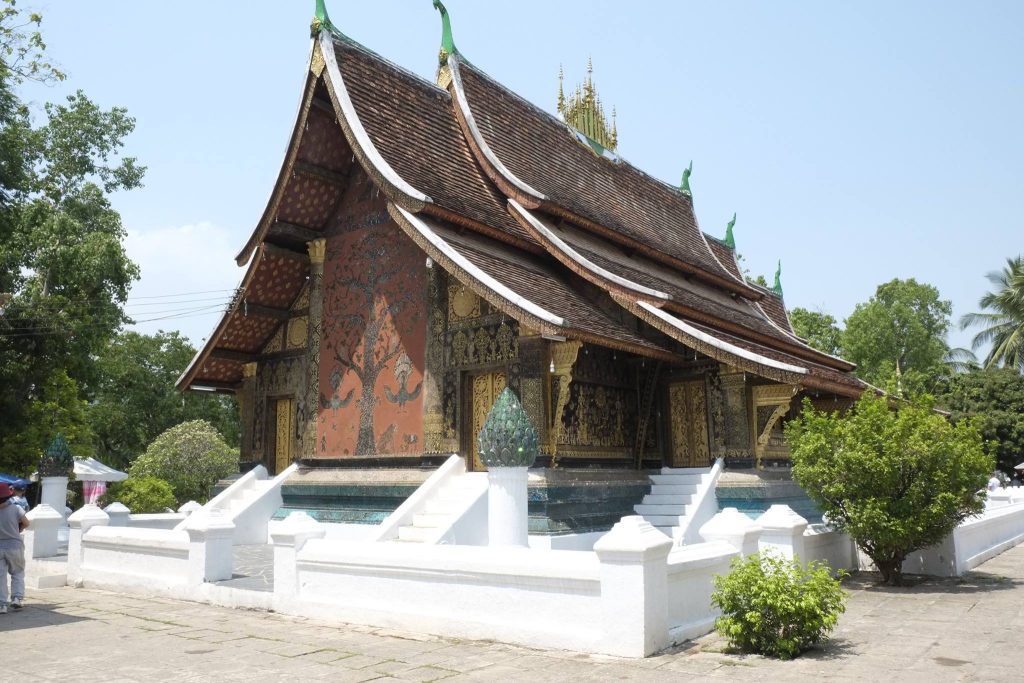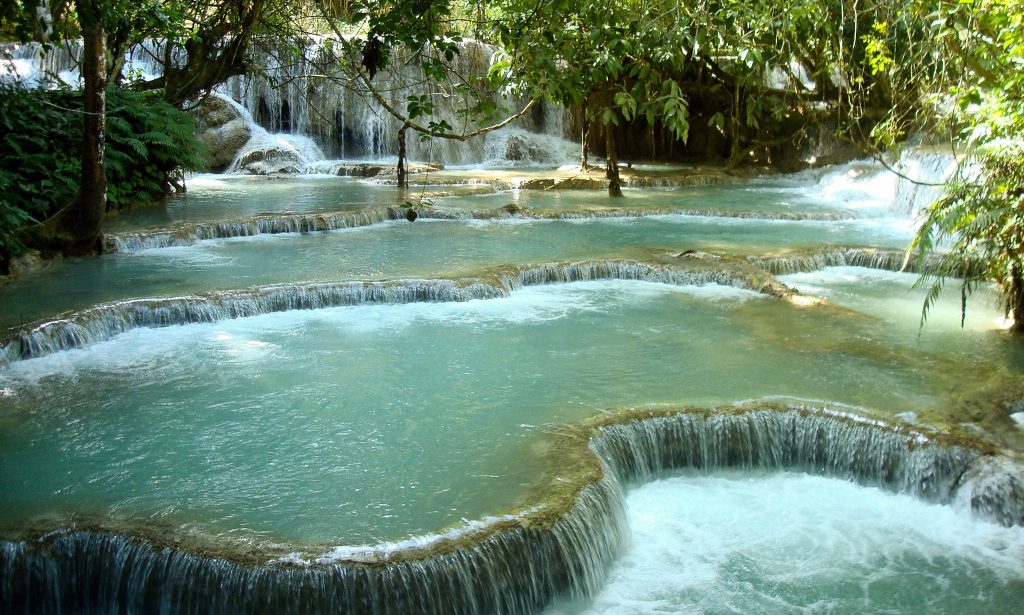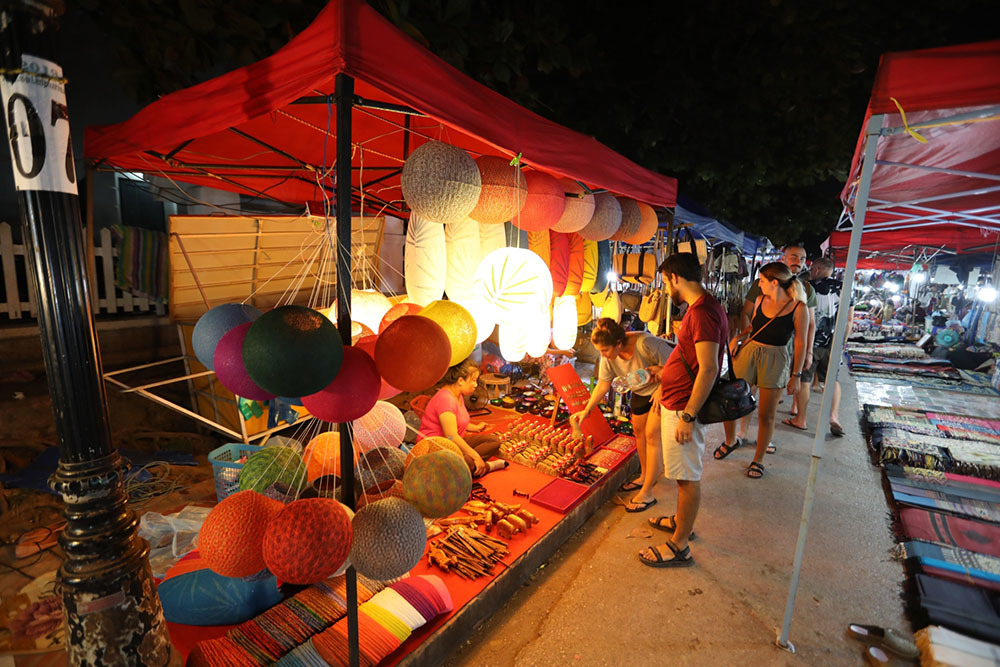Laos is known as the land-lock country and called million elephant country. And Luang Prabang Laos is the most outstanding and unique city to visit.
To visit Laos, the visitors will choose either or all of below destination depending on their travel duration. You can consider these highlighted spots in Laos such as:
+ Vientiane Capital in central Laos
+ Ancient capital Luang Prang in the north
+ Vang Vieng in the northern central where mostly favored by backpackers + 4000 Island and Plateau in southern Laos
Luang Prabang, above all, is the unmissable spots of Laos tour. To visit in Luang Prabang town in Laos, you should spend three to four days to enjoy the place and culture.

History of Luang Prabang
Luang Prabang is a city in northern Laos that has a rich and colorful history. The area has been inhabited since at least the 8th century and was ruled by various kingdoms and empires over the centuries, including the Khmer Empire and the Lan Xang Kingdom. In the 16th century, Luang Prabang became the capital of the Lan Xang Kingdom, and it remained an important political and cultural center for several hundred years.
During the 19th and early 20th centuries, Luang Prabang was part of French Indochina and became a center for French colonial administration and education. In 1945, the city was briefly occupied by the Japanese during World War II.
After Laos gained independence from France in 1954, Luang Prabang became the royal capital of the Kingdom of Laos. The city remained the country’s capital until the communist takeover in 1975, after which it became part of the Lao People’s Democratic Republic. Today, Luang Prabang is a UNESCO World Heritage site and a popular tourist destination known for its well-preserved architecture, traditional crafts, and Buddhist temples.
Amazing places to visit in Luang Prabang Laos
Luang Prabang, a city in northern Laos, is a UNESCO World Heritage site known for its well-preserved traditional architecture and Buddhist temples. Some of the popular places to visit in Luang Prabang include:
Wat Xieng Thong
One of the most important Buddhist temples in Luang Prabang, dating back to the 16th century. This beautiful temple in town center is one of the most beautiful place to visit in Luang Prabang.
It is considered one of the most important temples in the city and is a popular tourist attraction. The temple was built in 1560 by King Setthathirath and has survived many wars and invasions over the centuries.
The temple complex features several buildings and structures, including a main sim (ordination hall) that houses a large, gold-covered Buddha statue and intricate murals depicting Buddhist teachings and scenes from Lao folklore. The sim also features a beautifully decorated roof, with gold and red lacquer work and intricate carvings.
Kuang Si Falls

Another must-see attraction in Luang Prabang is Kuang Si waterfall. A beautiful multi-tiered waterfall located just outside of the city, with crystal-clear water and swimming holes.
The falls are a series of cascading waterfalls that flow into crystal-clear pools, surrounded by lush green jungle and limestone cliffs.
The water at Kuang Si Falls is a beautiful turquoise blue color, thanks to the presence of dissolved limestone particles. Visitors can swim in several of the pools, or simply relax on the banks and enjoy the natural scenery.
The falls are also home to several species of animals, including black bears, gibbons, and various species of birds and butterflies. There is a bear sanctuary near the entrance to the falls that provides a home for rescued bears that have been rescued from poachers and the illegal wildlife trade.
In addition to swimming and hiking, visitors to Kuang Si Falls can also visit a small village near the falls to learn about local culture and traditional handicrafts. The village is home to several ethnic minority groups, including the Hmong and Khmu, and visitors can observe traditional weaving, basket-making, and other crafts.
Royal Palace Museum
A former royal palace that has been converted into a museum, showcasing the history of the Lao monarchy and the country’s cultural heritage.
The museum is housed in a former royal palace that was built in 1904 during the French colonial period. It was used as the residence of the Lao monarchy until 1975, when the communist government took power.
Today, the palace has been converted into a museum that showcases the history of the Lao monarchy and the country’s cultural heritage. The museum’s exhibits include many artifacts and historical items related to the former royal family, including the king’s throne, his crown, and various royal regalia. The palace’s reception hall is also open to the public, featuring a large collection of gifts that were presented to the royal family by foreign dignitaries and heads of state.
In addition to the royal exhibits, the museum also features several galleries showcasing Lao art, culture, and history. These exhibits include traditional textiles, ceramics, weapons, and other artifacts from throughout the country’s history. There is also a small gallery dedicated to the life and teachings of Buddha, showcasing religious art and artifacts from throughout Southeast Asia.
Luang Prabang Night Market

A bustling market that takes place every evening in the center of the city, offering a wide variety of local handicrafts and souvenirs. The Luang Prabang night market is a lively and bustling place that offers a unique and authentic experience of Lao culture and traditions. It’s a great place to spend an evening, strolling along the stalls, sampling local foods, and picking up some unique souvenirs to take home.
The market takes place every evening along Sisavangvong Road, which is closed to traffic during the event.
The night market is known for its wide variety of local handicrafts and souvenirs, including textiles, jewelry, wooden carvings, and other traditional Lao crafts. Many of the items sold at the market are handmade by local artisans and are unique to the region.
Mount Phousi
A hill in the center of the city that offers panoramic views of Luang Prabang and the surrounding countryside, as well as several Buddhist shrines and temples.
Mount Phousi is a small hill located in the heart of Luang Prabang, a city in northern Laos. The hill is about 100 meters high and is a popular destination for visitors to the city.
At the top of Mount Phousi, there is a Buddhist temple, Wat Chom Si, which offers panoramic views of the city and the surrounding countryside. Visitors can climb the hill via a set of stairs that wind up through the trees, passing several smaller shrines and monuments along the way.
The climb to the top of Mount Phousi is not particularly strenuous and can be completed in about 20-30 minutes, depending on your fitness level. Once you reach the summit, you will be rewarded with stunning views of the city and the Mekong River, especially at sunset and sunrise.
Traditional Arts and Ethnology Centre
A museum dedicated to the ethnic diversity and cultural traditions of Laos, with exhibits showcasing traditional textiles, crafts, and art.
The museum is dedicated to preserving and promoting the traditional arts and cultural heritage of Laos, particularly the country’s many ethnic minority groups.
The museum’s exhibits include a wide range of traditional textiles, clothing, jewelry, and other handicrafts, as well as historical photographs and other artifacts related to Lao culture and history. The museum also hosts regular events and exhibitions showcasing local artists and craftspeople, as well as cultural performances and workshops.
Wat Mai Suwannaphumaham
A 18th century Buddhist temple that is known for its stunning architecture and intricate decorative carvings.
The temple was originally built in the late 18th century, and has been restored and expanded several times over the years. The temple is known for its beautiful golden bas-relief decorations, which depict scenes from Buddhist mythology and history. The interior of the temple is also decorated with intricate carvings and murals, and there are several Buddha statues and other religious artifacts on display.
One of the most notable features of Wat Mai Suwannaphumaham is its beautiful sim, or ordination hall. The sim is a large, open-air structure that features a stunning gold-leafed facade and intricate wooden carvings. Inside the sim, there are several large Buddha statues, as well as several smaller altars and shrines.
Famous local food to eat in Luang Prabang
When travel in Luang Prabang, trying local food is also an incredible experiences. Like their neighbor country – Vietnam with delicious food; Laos cuisine is extremely impressive. Here are suggestions of food to try in Luang Prabang:
- Laap: This is a traditional Lao dish made with minced meat, spices, and herbs. It is usually served with sticky rice and is a popular dish among locals and tourists alike.
- Tam Mak Hoong: This is a spicy papaya salad that is a staple of Lao cuisine. It is made with shredded papaya, chilies, lime juice, and fish sauce, and is a refreshing and spicy dish.
- Khao Soi: This is a noodle soup that is commonly found in northern Laos. It is made with egg noodles, chicken or beef, and a rich, flavorful broth.
- Mok Pa: This is a steamed fish dish that is wrapped in banana leaves and seasoned with spices, herbs, and lime juice. It is a popular dish in Luang Prabang and is often served as a starter or main course.
- Baguettes: Although not traditionally Lao, the French influence on the cuisine in Luang Prabang has resulted in a delicious range of baguette sandwiches. They are typically filled with meat, vegetables, and sauces, and are a great option for a quick and tasty meal.
- Sticky rice: Sticky rice is a staple of Lao cuisine and is often served with most dishes. It is typically eaten with your hands and is used to scoop up other dishes, adding a unique texture and flavor to the meal.

Thanks for your blog, nice to read. Do not stop.